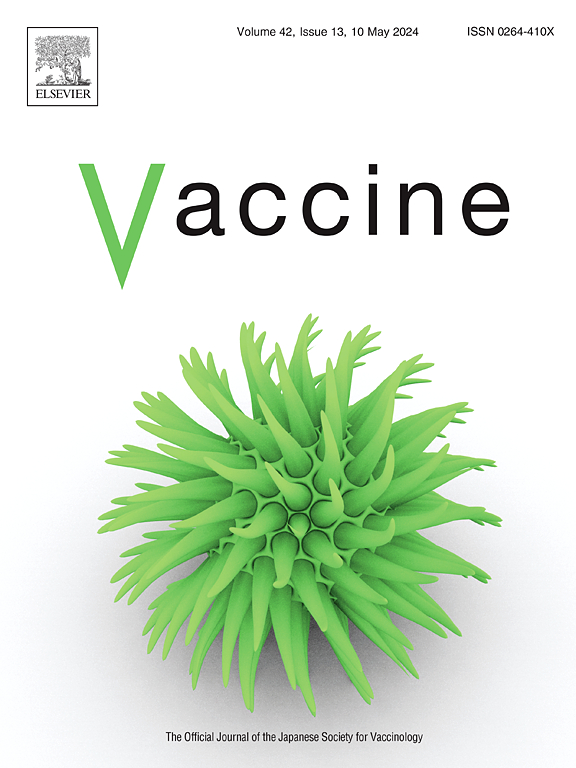电子免疫登记和电子物流管理信息系统对四个低收入和中等收入国家的影响:几内亚、洪都拉斯、卢旺达和坦桑尼亚
IF 4.5
3区 医学
Q2 IMMUNOLOGY
引用次数: 0
摘要
背景低收入和中等收入国家越来越有兴趣引进和扩大电子免疫登记(eIR)和电子物流管理信息系统(eLMIS)等数字卫生工具,以支持免疫服务。在四个中低收入国家对这些工具的使用情况进行了评估,以便为其进一步扩大和投资的决策提供信息。方法根据预先确定的标准,对每个国家的区域、区和卫生机构进行阳性抽样。在2021年10月至2022年9月期间,通过半结构化问卷调查、标准化能力评估和数据准确性检查,在几内亚的50个卫生机构、洪都拉斯的88个卫生机构、卢旺达的36个卫生机构和坦桑尼亚的101个卫生机构收集了初步数据。数据侧重于电子工具的使用、用户体验、基础设施、劳动力需求和决策,以及免疫数据的质量和卫生工作者和疫苗接受者的看法。数据分析结合了定量和定性两种方法。eIR和eLMIS的实施与国家免疫规划(NIP)流程和结果的改善有关。用户对这些工具感到满意(满意率为87%),非洲国家95%的用户重视信息的可及性,91%的用户认为信息准确和完整。一些护理人员报告说,使用这些工具后,卫生机构的组织工作得到了改善,等待时间也缩短了。大多数eIR使用者注意到流程效率(81%)和免疫服务提供(89%)的改善。在卢旺达和坦桑尼亚,纯纸质或电子设置的数据准确性(60%)高于双纸质电子系统(45%)。eLMIS的使用与疫苗库存数据质量的改善和缺货的减少有关。虽然77%的卫生工作者具有数字知识,但数字基础设施不足是工具使用的主要障碍。与民事登记和生命统计系统(CRVS)的互操作性有限,阻碍了对未接种疫苗的儿童的跟踪。为了充分发挥电子工具在中低收入国家的潜力,政府完全拥有所有权、有针对性的基础设施投资、向全电子系统迁移以及将eIR与CRVS集成将是至关重要的。本文章由计算机程序翻译,如有差异,请以英文原文为准。
Impact of electronic immunization registries and electronic logistics management information systems in four low-and middle-income countries: Guinea, Honduras, Rwanda, and Tanzania
Background
There is increasing interest in low-and middle-income countries (LMICs) to introduce and scale-up digital health tools like electronic immunization registries (eIR), and electronic logistics management information systems (eLMIS) to support immunization services. An evaluation of the use of these tools was conducted in four LMICs to inform decisions about their further expansion and investments.
Methods
Purposive sampling of regions, districts, and health facilities was done in each country based on predefined criteria. Primary data were collected between October 2021 and September 2022 in 50 health facilities in Guinea, 88 in Honduras, 36 in Rwanda, and 101 in Tanzania using semi-structured questionnaires, standardized competency assessments and data accuracy checks. Data focused on electronic tool usage, user experience, infrastructure, workforce needs, and decision-making, as well as immunization data quality and perceptions of health workers and vaccine recipients. Data analysis combined both quantitative and qualitative methods.
Findings
The implementation of eIR and eLMIS was associated with improvements in National Immunization Programme (NIP) processes and outcomes. Users were satisfied with the tools (87 % satisfaction rate), and 95 % of users in the African countries valued the accessibility of information, with 91 % finding it accurate and complete. Some caregivers reported better organization and shorter waiting times in health facilities using the tools. Most eIR users noted improvements in process efficiencies (81 %) and immunization service delivery (89 %). In Rwanda and Tanzania data accuracy was higher in exclusively paper or electronic settings (60 %) compared to dual paper-electronic systems (45 %). eLMIS use was associated with improvements in vaccine stock data quality and reduced stock-outs. While 77 % of health workers were digitally literate, inadequate digital infrastructure was a key barrier to tool use. Interoperability with the Civil Registration and Vital Statistics system (CRVS) was limited, hindering the tracking of unimmunized children.
Conclusions
To fully realize the potential of electronic tools in LMICs, full government ownership, targeted infrastructure investments, migration to fully electronic systems, and the integration of eIR with the CRVS will be essential.
求助全文
通过发布文献求助,成功后即可免费获取论文全文。
去求助
来源期刊

Vaccine
医学-免疫学
CiteScore
8.70
自引率
5.50%
发文量
992
审稿时长
131 days
期刊介绍:
Vaccine is unique in publishing the highest quality science across all disciplines relevant to the field of vaccinology - all original article submissions across basic and clinical research, vaccine manufacturing, history, public policy, behavioral science and ethics, social sciences, safety, and many other related areas are welcomed. The submission categories as given in the Guide for Authors indicate where we receive the most papers. Papers outside these major areas are also welcome and authors are encouraged to contact us with specific questions.
 求助内容:
求助内容: 应助结果提醒方式:
应助结果提醒方式:


